History of the United States
Part of a series on the
|
|---|
| History of the United States |
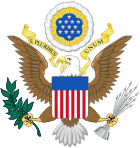 |
| This article is part of a series on the |
| Culture of the United States of America |
|---|
| Society |
| Arts and literature |
| Pastimes |
| Symbols |
United States portal |
The date of the start of the history of the United States is a subject of debate among historians. Older textbooks start with the arrival of Christopher Columbus on October 12, 1492 and emphasize the European background of the colonization of the Americas, or they start around 1600 and emphasize theAmerican frontier. In recent decades American schools and universities typically have shifted back in time to include more on the colonial period and much more on the prehistory of the Native Americans.[1][2]
Indigenous people lived in what is now the United States for thousands of years before European colonists began to arrive, mostly from England, after 1600. The Spanish built small settlements in Florida and the Southwest, and the French along the Mississippi River and the Gulf Coast. By the 1770s, thirteen British colonies contained two and a half million people along the Atlantic coasteast of the Appalachian Mountains. After the end of the French and Indian Wars in the 1760s, the British government imposed a series of new taxes, rejecting the colonists' argument that any new taxes had to be approved by them (see Stamp Act 1765). Tax resistance, especially the Boston Tea Party(1773), led to punitive laws (the Intolerable Acts) by Parliament designed to end self-government in Massachusetts. American Patriots (as they called themselves) adhered to a political ideology called republicanism that emphasized civic duty, virtue, and opposition to corruption, fancy luxuries and aristocracy.
Armed conflict began in 1775 as Patriots drove the royal officials out of every colony and assembled in mass meetings and conventions. In 1776, the Second Continental Congress declared that there was a new, independent nation, the United States of America, not just a collection of disparate colonies. With large-scale military and financial support from France and the military leadership of General George Washington, the American Patriots won the Revolutionary War. The peace treaty of 1783 gave the new nation the land east of the Mississippi River (except Florida and Canada). The central government established by the Articles of Confederation proved ineffectual at providing stability, as it had no authority to collect taxes and had no executive officer. Congress called a convention to meet secretly in Philadelphia in 1787. It wrotea new Constitution, which was adopted in 1789. In 1791, a Bill of Rights was added to guarantee inalienable rights. With Washington as the first presidentand Alexander Hamilton his chief political and financial adviser, a strong central government was created. When Thomas Jefferson became president he purchased the Louisiana Territory from France, doubling the size of the United States. A second and final war with Britain was fought in 1812.
Encouraged by the notion of manifest destiny, federal territory expanded all the way to the Pacific. The U.S. always was large in terms of area, but its population was small, only 4 million in 1790. Population growth was rapid, reaching 7.2 million in 1810, 32 million in 1860, 76 million in 1900, 132 million in 1940, and 321 million in 2015. Economic growth in terms of overall GDP was even faster. However, compared to European powers, the nation's military strength was relatively limited in peacetime before 1940. The expansion was driven by a quest for inexpensive land for yeoman farmers and slave owners. The expansion of slavery was increasingly controversial and fueled political and constitutional battles, which were resolved by compromises. Slavery was abolished in all states north of the Mason–Dixon line by 1804, but the South continued to profit off the institution, producing high-value cotton exports to feed increasing high demand in Europe. The 1860 presidential election of Republican Abraham Lincoln was on a platform of ending the expansion of slavery and putting it on a path to extinction.
Seven cotton-based deep South slave states seceded and later founded the Confederacy four months before Lincoln's inauguration. No nation ever recognized the Confederacy, but it opened the war by attacking Fort Sumter in 1861. A surge of nationalist outrage in the North fueled a long, intense American Civil War (1861–1865). It was fought largely in the South as the overwhelming material and manpower advantages of the North proved decisive in a long war. The war's result was restoration of the Union, the impoverishment of the South, and the abolition of slavery. In the Reconstruction era (1863–1877), legal and voting rights were extended to the freed slave. The national government emerged much stronger, and because of the Fourteenth Amendment in 1868, it gained the explicit duty to protect individual rights. However, when white Democrats regained their power in the South during the 1870s, often by paramilitary suppression of voting, they passed Jim Crow laws to maintain white supremacy, and new disfranchising constitutions that prevented most African Americans and many poor whites from voting. This situation continued for decades until gains of the Civil Rights movement in the 1960s and passage of federal legislation to enforce constitutional rights.
The United States became the world's leading industrial power at the turn of the 20th century due to an outburst of entrepreneurship in the Northeast and Midwest and the arrival of millions of immigrant workers and farmers from Europe. The national railroad network was completed with the work of Chinese immigrants and large-scale mining and factories industrialized the Northeast and Midwest. Mass dissatisfaction with corruption, inefficiency and traditional politics stimulated the Progressive movement, from the 1890s to 1920s, which led to many social and political reforms. In 1920, the 19th Amendment to the Constitution guaranteed women's suffrage (right to vote). This followed the 16th and 17th amendments in 1913, which established the first national income tax and direct election of US senators to Congress. Initially neutral duringWorld War I, the US declared war on Germany in 1917 and later funded the Allied victory the following year.
After a prosperous decade in the 1920s, the Wall Street Crash of 1929 marked the onset of the decade-long worldwideGreat Depression. Democratic President Franklin D. Roosevelt ended the Republican dominance of the White House and implemented his New Deal programs for relief, recovery, and reform. The New Deal, which defined modern American liberalism, included relief for the unemployed, support for farmers, Social Security and a minimum wage. After the Japanese attack on Pearl Harbor on December 7, 1941, the United States entered World War II along with Britain, the Soviet Union,China, and the smaller number of Allied nations. The U.S. financed the Allied war effort and helped defeat Nazi Germany in the European theater. Its involvement culminated in using the newly invented nuclear weapons on Japanese cities that helped defeat Imperial Japan in the Pacific theater.
The United States and the Soviet Union emerged as rival superpowers after World War II. During the Cold War, the US and the USSR confronted each other indirectly in the arms race, the Space Race, proxy wars, and propaganda campaigns. US foreign policy during the Cold War was built around the support of Western Europe and Japan along with the policy ofcontainment, stopping the spread of communism. The US joined the wars in Korea and Vietnam to try to stop its spread. In the 1960s, in large part due to the strength of the civil rights movement, another wave of social reforms were enacted by enforcing the constitutional rights of voting and freedom of movement to African-Americans and other racial minorities. The Cold War ended when the Soviet Union officially dissolved in 1991, leaving the United States as the world's only superpower.
After the Cold War, the United States focused on international conflicts around the Middle East in response to the Gulf Warin the early 1990s. The beginning of the 21st century saw the September 11 attacks by Al-Qaeda in 2001, which would later be followed by U.S.-led wars in Iraq and Afghanistan. In 2008, the United States had its worst economic crisis since the Great Depression, which has been followed by slower than usual rates of economic growth during the 2010s.
Contents
[hide]- 1Pre-Columbian Era
- 2Colonial period
- 318th century
- 4American Revolution
- 5Early years of the republic
- 619th century
- 6.1Jeffersonian Republican Era
- 6.2War of 1812
- 6.3Era of Good Feelings
- 6.4Indian removal
- 6.5Second Party System
- 6.6Second Great Awakening
- 6.7Abolitionism
- 6.8Westward expansion and Manifest Destiny
- 6.9Divisions between North and South
- 6.10Civil War
- 6.11Emancipation
- 6.12Reconstruction Era
- 6.13The West and the Gilded Age
- 720th century
- 821st century
- 9See also
- 10References
- 11Textbooks
- 12Further reading
- 13External links
Pre-Columbian Era[edit]
It is not definitively known how or when the Native Americans first settled the Americasand the present-day United States. The prevailing theory proposes that people migrated from Eurasia across Beringia, a land bridge that connected Siberia to present-day Alaska during the Ice Age, and then spread southward throughout the Americas and possibly going as far south as the Antarctic Peninsula.[citation needed] This migration may have begun as early as 30,000 years ago[3] and continued through to about 10,000+ years ago, when the land bridge became submerged by the rising sea level caused by the ending of the last glacial period.[4] These early inhabitants, calledPaleoamericans, soon diversified into many hundreds of culturally distinct nations and tribes.
The pre-Columbian era incorporates all period subdivisions in the history and prehistory of the Americas before the appearance of significant European influences on the American continents, spanning the time of the original settlement in the Upper Paleolithic period to European colonization during the Early Modern period. While technically referring to the era before Christopher Columbus' voyages of 1492 to 1504, in practice the term usually includes the history of American indigenous cultures until they were conquered or significantly influenced by Europeans, even if this happened decades or even centuries after Columbus' initial landing.
Native development prior to European contact[edit]
Native American cultures are not normally included in characterizations of advanced stone age cultures as "Neolithic," which is a category that more often includes only the cultures in Eurasia, Africa, and other regions. The archaeological periods used are the classifications of archaeological periods and cultures established in Gordon Willey andPhilip Phillips' 1958 book Method and Theory in American Archaeology. They divided the archaeological record in the Americas into five phases;[5] see Archaeology of the Americas.
The Clovis culture, a megafauna hunting culture, is primarily identified by use of flutedspear points. Artifacts from this culture were first excavated in 1932 near Clovis, New Mexico. The Clovis culture ranged over much of North America and also appeared in South America. The culture is identified by the distinctive Clovis point, a flaked flint spear-point with a notched flute, by which it was inserted into a shaft. Dating of Clovis materials has been by association with animal bones and by the use of carbon datingmethods. Recent reexaminations of Clovis materials using improved carbon-dating methods produced results of 11,050 and 10,800 radiocarbon years B.P. (roughly 9100 to 8850 BCE).
Numerous Paleoindian cultures occupied North America, with some arrayed around the Great Plains and Great Lakes of the modern United States of America and Canada, as well as adjacent areas to the West and Southwest. According to the oral histories of many of the indigenous peoples of the Americas, they have been living on this continent since their genesis, described by a wide range of traditional creation stories. Other tribes have stories that recount migrations across long tracts of land and a great river, believed to be the Mississippi River.[6] Genetic and linguistic data connect the indigenous people of this continent with ancient northeast Asians. Archeological and linguistic data has enabled scholars to discover some of the migrations within the Americas.
The Folsom Tradition was characterized by use of Folsom points as projectile tips, and activities known from kill sites, where slaughter and butchering of bison took place. Folsom tools were left behind between 9000 BCE and 8000 BCE.[7]
Na-Dené-speaking peoples entered North America starting around 8000 BCE, reaching the Pacific Northwest by 5000 BCE,[8] and from there migrating along the Pacific Coast and into the interior. Linguists, anthropologists and archeologists believe their ancestors comprised a separate migration into North America, later than the first Paleo-Indians. They migrated into Alaska and northern Canada, south along the Pacific Coast, into the interior of Canada, and south to the Great Plains and the American Southwest.
They were the earliest ancestors of the Athabascan- speaking peoples, including the present-day and historical Navajo and Apache. They constructed large multi-family dwellings in their villages, which were used seasonally. People did not live there year-round, but for the summer to hunt and fish, and to gather food supplies for the winter.[9] The Oshara Tradition people lived from 5500 BCE to 600 CE. They were part of the Southwestern Archaic Tradition centered in north-centralNew Mexico, the San Juan Basin, the Rio Grande Valley, southern Colorado, and southeastern Utah.
Since the 1990s, archeologists have explored and dated eleven Middle Archaic sites in present-day Louisiana and Florida at which early cultures built complexes with multiple earthwork mounds; they were societies of hunter-gatherers rather than the settled agriculturalists believed necessary according to the theory of Neolithic Revolution to sustain such large villages over long periods. The prime example is Watson Brake in northern Louisiana, whose 11-mound complex is dated to 3500 BCE, making it the oldest, dated site in the Americas for such complex construction. It is nearly 2,000 years older than the Poverty Point site. Construction of the mounds went on for 500 years until was abandoned about 2800 BCE, probably due to changing environmental conditions.[10]
Poverty Point culture is a Late Archaic archaeological culture that inhabited the area of the lower Mississippi Valley and surrounding Gulf Coast. The culture thrived from 2200 BCE to 700 BCE, during the Late Archaic period.[11] Evidence of this culture has been found at more than 100 sites, from the major complex at Poverty Point, Louisiana (a UNESCO World Heritage Site) across a 100-mile (160 km) range to the Jaketown Site near Belzoni, Mississippi.
Poverty Point is a 1 square mile (2.6 km2) complex of six major earthwork concentric rings, with additional platform mounds at the site. Artifacts show the people traded with other Native Americans located from Georgia to the Great Lakes region. This is one among numerous mound sites of complex indigenous cultures throughout the Mississippi and Ohio valleys. They were one of several succeeding cultures often referred to as mound builders.
The Woodland period of North American pre-Columbian cultures refers to the time period from roughly 1000 BCE to 1,000 CE in the eastern part of North America. The term "Woodland" was coined in the 1930s and refers to prehistoric sites dated between the Archaic period and the Mississippian cultures. The Hopewell tradition is the term for the common aspects of the Native American culture that flourished along rivers in the northeastern and midwestern United States from 200 BCE to 500 CE.[12]
The indigenous peoples of the Pacific Northwest Coast were of many nations and tribal affiliations, each with distinctive cultural and political identities, but they shared certain beliefs, traditions and practices, such as the centrality of salmon as a resource and spiritual symbol. Their gift-giving feast, potlatch, is a highly complex event where people gather in order to commemorate special events. These events, such as, the raising of a Totem pole or the appointment or election of a new chief. The most famous artistic feature of the culture is the Totem pole, with carvings of animals and other characters to commemorate cultural beliefs, legends, and notable events.
The Hopewell tradition was not a single culture or society, but a widely dispersed set of related populations, who were connected by a common network of trade routes,[13] known as the Hopewell Exchange System. At its greatest extent, the Hopewell exchange system ran from the Southeastern United States into the southeastern Canadian shores of Lake Ontario. Within this area, societies participated in a high degree of exchange; most activity was conducted along the waterways that served as their major transportation routes. The Hopewell exchange system traded materials from all over the United States.
Major cultures[edit]
- Adena culture: The Adena culture was a Native American culture that existed from 1000 BC to 200 BC, in a time known as the Early Woodland period. The Adena culture refers to what were probably a number of related Native American societies sharing a burial complex and ceremonial system.
- Coles Creek culture: The Coles Creek culture is an indigenous development of the Lower Mississippi Valley that took place between the terminal Woodland periodand the later Plaquemine culture period. The period is marked by the increased use of flat-topped platform mounds arranged around central plazas, more complex political institutions, and a subsistence strategy still grounded in the Eastern Agricultural Complex and hunting rather than on the maize plant as would happen in the succeeding Plaquemine Mississippian period. The culture was originally defined by the unique decoration on grog-tempered ceramic ware by James A. Ford after his investigations at the Mazique Archeological Site. He had studied both the Mazique and Coles Creek Sites, and almost went with the Mazique culture, but decided on the less historically involved sites name. It is ancestral to the Plaquemine culture.
- Hohokam culture: The Hohokam was a culture centered along American Southwest.[14] The early Hohokam founded a series of small villages along the middle Gila River. They raised corn, squash and beans. The communities were located near good arable land, with dry farming common in the earlier years of this period.[14] They were known for their pottery, using the paddle-and-anvil technique. The Classical period of the culture saw the rise in architecture and ceramics. Buildings were grouped into walled compounds, as well as earthen platform mounds. Platform mounds were built along river as well as irrigation canal systems, suggesting these sites were administrative centers allocating water and coordinating canal labor. Polychrome pottery appeared, and inhumation burial replaced cremation. Trade included that of shells and other exotics. Social and climatic factors led to a decline and abandonment of the area after 1400 A.D.
|
- Ancestral Puebloan culture: The Ancestral Puebloan culture covered present-day Four Corners region of the United States, comprising southern Utah, northern Arizona, northwestern New Mexico, and southwestern Colorado.[15] It is believed that the Ancestral Puebloans developed, at least in part, from theOshara Tradition, who developed from the Picosa culture. They lived in a range of structures that included small family pit houses, larger clan type structures, grand pueblos, and cliff sited dwellings. The Ancestral Puebloans possessed a complex network that stretched across the Colorado Plateau linking hundreds of communities and population centers. The culture is perhaps best known for the stone and earth dwellings built along cliff walls, particularly during the Pueblo II and Pueblo III eras.
- Three UNESCO World Heritage Sites located in the United States are credited to the Pueblos: Mesa Verde National Park, Chaco Culture National Historical Park and Taos Pueblo.
- The best-preserved examples of the stone dwellings are inNational Parks (USA), examples being, Navajo National Monument, Chaco Culture National Historical Park, Mesa Verde National Park, Canyons of the Ancients National Monument, Aztec Ruins National Monument, Bandelier National Monument, Hovenweep National Monument, andCanyon de Chelly National Monument.
- Mississippian culture: The Mississippian culture which extended throughout the Ohio and Mississippi valleys and built sites throughout the Southeast, created the largest earthworks in North America north of Mexico, most notably at Cahokia, on a tributary of the Mississippi River in present-day Illinois.
- The ten-story Monks Mound at Cahokia has a larger circumference than thePyramid of the Sun at Teotihuacan or the Great Pyramid of Egypt. The 6 square miles (16 km2) city complex was based on the culture's cosmology; it included more than 100 mounds, positioned to support their sophisticated knowledge of astronomy, and built with knowledge of varying soil types. The society began building at this site about 950 CE, and reached its peak population in 1,250 CE of 20,000–30,000 people, which was not equalled by any city in the present-day United States until after 1800.
- Cahokia was a major regional chiefdom, with trade and tributary chiefdoms located in a range of areas from bordering the Great Lakes to the Gulf of Mexico.
- Kincaid[16] c. 1050-1400 AD,[17] is one of the largest settlements of the Mississippian culture, it was located at the southern tip of present-day U.S. state of Illinois. Kincaid Mounds has been notable for both its significant role in native North American prehistory and for the central role the site has played in the development of modern archaeological techniques. The site had at least 11 substructure platform mounds(ranking fifth for mound-culture pyramids). Artifacts from the settlement link its major habitation and the construction of the mounds to the Mississippian period, but it was also occupied earlier during the Woodland period.
- The Mississippian culture developed the Southeastern Ceremonial Complex, the name which archeologists have given to the regional stylistic similarity of artifacts, iconography, ceremonies and mythology. The rise of the complex culture was based on the people's adoption of maize agriculture, development of greater population densities, andchiefdom-level complex social organization from 1200 CE to 1650 CE.[18][19]
- The Mississippian pottery are some of the finest and most widely spread ceramics north of Mexico. Cahokian potterywas especially fine, with smooth surfaces, very thin walls and distinctive tempering, slips and coloring.[20]
- Iroquois Culture: The Iroquois League of Nations or "People of the Long House", based in present-day upstate and western New York, had a confederacy model from the mid-15th century. It has been suggested that their culture contributed to political thinking during the development of the later United States government. Their system of affiliation was a kind of federation, different from the strong, centralized European monarchies.[21][22][23]
- Leadership was restricted to a group of 50 sachem chiefs, each representing one clan within a tribe. The Oneida and Mohawk people had nine seats each; the Onondagas held fourteen; the Cayuga had ten seats; and the Seneca had eight. Representation was not based on population numbers, as the Seneca tribe greatly outnumbered the others. When a sachem chief died, his successor was chosen by the senior woman of his tribe in consultation with other female members of the clan; property and hereditary leadership were passedmatrilineally. Decisions were not made through voting but through consensus decision making, with each sachem chief holding theoretical veto power. The Onondaga were the "firekeepers", responsible for raising topics to be discussed. They occupied one side of a three-sided fire (the Mohawk and Seneca sat on one side of the fire, the Oneida and Cayuga sat on the third side.)[23]
- Elizabeth Tooker, an anthropologist, has said that it was unlikely the US founding fathers were inspired by the confederacy, as it bears little resemblance to the system of governance adopted in the United States. For example, it is based on inherited rather than elected leadership, selected by female members of the tribes, consensus decision-making regardless of population size of the tribes, and a single group capable of bringing matters before the legislative body.[23]
- Long-distance trading did not prevent warfare and displacement among the indigenous peoples, and their oral histories tell of numerous migrations to the historic territories where Europeans encountered them. The Iroquois invaded and attacked tribes in the Ohio River area of present-day Kentucky and claimed the hunting grounds. Historians have placed these events as occurring as early as the 13th century, or in the 17th century Beaver Wars.[24]
- Through warfare, the Iroquois drove several tribes to migrate west to what became known as their historically traditional lands west of the Mississippi River. Tribes originating in the Ohio Valley who moved west included the Osage, Kaw, Ponca andOmaha people. By the mid-17th century, they had resettled in their historical lands in present-day Kansas, Nebraska, Arkansas and Oklahoma. The Osage warred withCaddo-speaking Native Americans, displacing them in turn by the mid-18th century and dominating their new historical territories.[24]
Native development in Hawaii[edit]
Native development in Hawaii begins with the settlement of Polynesians between 1st century to10th century. Around 1200 AD Tahitian explorers found and began settling the area as well. This became the rise of the Hawaiian civilization and would be separated from the rest of the world for another 500 years until the arrival of the British. Europeans under the British explorerCaptain James Cook arrived in the Hawaiian Islands in 1778. Within five years of contact, European military technology would help Kamehameha I conquer most of the people, and eventually unify the islands for the first time; establishing theKingdom of Hawaii.
Colonial period[edit]
After a period of exploration sponsored by major European nations, the first successful English settlement was established in 1607. Europeans brought horses, cattle, and hogs to the Americas and, in turn, took back to Europe maize, turkeys, potatoes, tobacco, beans, and squash. Many explorers and early settlers died after being exposed to new diseases in the Americas. The effects of new Eurasian diseases carried by the colonists, especially smallpox and measles, were much worse for the Native Americans, as they had no immunity to them. They suffered epidemics and died in very large numbers, usually before large-scale European settlement began. Their societies were disrupted and hollowed out by the scale of deaths.[25][26]
Spanish, Dutch, and French colonization[edit]
Spanish explorers were the first Europeans withChristopher Columbus' second expedition, to reach Puerto Rico on November 19, 1493; others reached Florida in 1513.[27] Spanish expeditions quickly reached the Appalachian Mountains, the Mississippi River, theGrand Canyon[28] and the Great Plains. In 1540, Hernando de Soto undertook an extensive exploration of the Southeast.[29]
In 1540, Francisco Vásquez de Coronado explored from Arizona to central Kansas.[29]Small Spanish settlements eventually grew to become important cities, such as San Antonio, Texas; Albuquerque, New Mexico; Tucson, Arizona; Los Angeles, California; and San Francisco, California.[30]
New Netherland was a 17th-century Dutch colony centered on present-day New York City and the Hudson River Valley; the Dutch traded furs with the Native Americans to the north. The colony served as a barrier to expansion from New England. Despite being Calvinists and building the Reformed Church in America, the Dutch were tolerant of other religions and cultures.[31]
The colony, which was taken over by Britain in 1664, left an enduring legacy on American cultural and political life. This includes secular broad-mindedness and mercantile pragmatism in the city as well as rural traditionalism in the countryside (typified by the story of Rip Van Winkle). Notable Americans of Dutch descent includeMartin Van Buren, Theodore Roosevelt, Franklin D. Roosevelt, Eleanor Roosevelt and the Frelinghuysens.[31]
New France was the area colonized by France from 1534 to 1763. There were few permanent settlers outside Quebec and Acadia, but the French had far-reaching trading relationships with Native Americans throughout the Great Lakes and Midwest. French villages along the Mississippi and Illinois rivers were based in farming communities that served as a granary for Gulf Coast settlements. The French established plantations in Louisiana along with settling New Orleans, Mobile and Biloxi.
The Wabanaki Confederacy were military allies of New France through the four French and Indian Wars while the British colonies were allied with the Iroquois Confederacy. During the French and Indian War – the North American theater of theSeven Years' War – New England fought successfully against French Acadia. The British removed Acadians from Acadia(Nova Scotia) and replaced them with New England Planters.[32] Eventually, some Acadians resettled in Louisiana, where they developed a distinctive rural Cajun culture that still exists. They became American citizens in 1803 with the Louisiana Purchase.[33] Other French villages along the Mississippi and Illinois rivers were absorbed when the Americans started arriving after 1770, or settlers moved west to escape them.[34] French influence and language in New Orleans, Louisianaand the Gulf Coast was more enduring; New Orleans was notable for its large population of free people of color before the Civil War.
British colonization[edit]
The strip of land along the eastern seacoast was settled primarily by English colonists in the 17th century along with much smaller numbers of Dutch and Swedes. Colonial America was defined by a severe labor shortage that employed forms of unfree labor such as slavery andindentured servitude and by a British policy of benign neglect (salutary neglect). Over half of all European immigrants to Colonial America arrived as indentured servants.[36] Salutary neglect permitted the development of an American spirit distinct from that of its European founders.[37]
The first successful English colony,Jamestown, was established in 1607 on the James River inVirginia. Jamestown languished for decades until a new wave of settlers arrived in the late 17th century and established commercial agriculture based on tobacco. Between the late 1610s and the Revolution, the British shipped an estimated 50,000 convicts to their American colonies.[38] A severe instance of conflict was the 1622 Powhatanuprising in Virginia in which Native Americans killed hundreds of English settlers. The largest conflicts between Native Americans and English settlers in the 17th century wereKing Philip's War in New England[39] and the Yamasee War in South Carolina.[40]
New England was initially settled primarily by Puritans. The Pilgrims established a settlement in 1620 at Plymouth Colony, which was followed by the establishment of the Massachusetts Bay Colony in 1630. The Middle Colonies, consisting of the present-day states of New York, New Jersey, Pennsylvania, and Delaware, were characterized by a large degree of diversity. The first attempted English settlement south of Virginia was theProvince of Carolina, with Georgia Colony – the last of the Thirteen Colonies – established in 1733.[41]
The colonies were characterized by religious diversity, with many Congregationalists in New England, German and Dutch Reformed in the Middle Colonies, Catholics in Maryland, and Scots-Irish Presbyterians on the frontier. Sephardic Jews were among early settlers in cities of New England and the South. Many immigrants arrived as religious refugees: French Huguenots settled in New York, Virginia and the Carolinas. Many royal officials and merchants were Anglicans.[42]
Religiosity expanded greatly after the First Great Awakening, a religious revival in the 1740s led by preachers such as Jonathan Edwards and George Whitefield. American Evangelicals affected by the Awakening added a new emphasis on divine outpourings of the Holy Spirit and conversions that implanted within new believers an intense love for God. Revivals encapsulated those hallmarks and carried the newly created evangelicalism into the early republic, setting the stage for the Second Great Awakening beginning in the late 1790s.[43] In the early stages, evangelicals in the South such as Methodists and Baptists preached for religious freedom and abolition of slavery; they converted many slaves and recognized some as preachers.
Each of the 13 American colonies had a slightly different governmental structure. Typically, a colony was ruled by a governor appointed from London who controlled the executive administration and relied upon a locally elected legislature to vote taxes and make laws. By the 18th century, the American colonies were growing very rapidly as a result of low death rates along with ample supplies of land and food. The colonies were richer than most parts of Britain, and attracted a steady flow of immigrants, especially teenagers who arrived as indentured servants.[44]
The tobacco and rice plantations imported African slaves for labor from the British colonies in the West Indies, and by the 1770s African slaves comprised a fifth of the American population. The question of independence from Britain did not arise as long as the colonies needed British military support against the French and Spanish powers. Those threats were gone by 1765. London regarded the American colonies as existing for the benefit of the mother country. This policy is known as mercantilism.[44]
18th century[edit]
An upper-class, with wealth based on large plantations operated by slave labor, and holding significant political power and even control over the churches, emerged in South Carolina and Virginia. A unique class system operated in upstate New York, where Dutch tenant farmers rented land from very wealthy Dutch proprietors, such as the Rensselaer family. The other colonies were more equalitarian, with Pennsylvania being representative. By the mid-18th century Pennsylvania was basically a middle-class colony with limited deference to its small upper-class. A writer in the Pennsylvania Journal in 1756 summed it up:
Political integration and autonomy[edit]
The French and Indian War (1754–63) was a watershed event in the political development of the colonies. It was also part of the larger Seven Years' War. The influence of the main rivals of the British Crown in the colonies and Canada, the French and North American Indians, was significantly reduced with the territory of the Thirteen Colonies expanding into New France both in Canada and the Louisiana Territory. Moreover, the war effort resulted in greater political integration of the colonies, as reflected in the Albany Congress and symbolized by Benjamin Franklin's call for the colonies to "Join or Die". Franklin was a man of many inventions – one of which was the concept of a United States of America, which emerged after 1765 and was realized in July 1776.[46]
Following Britain's acquisition of French territory in North America, King George IIIissued the Royal Proclamation of 1763 with the goal of organizing the new North American empire and protecting the native Indians from colonial expansion into western lands beyond the Appalachian Mountains. In ensuing years, strains developed in the relations between the colonists and the Crown. The British Parliamentpassed the Stamp Act of 1765, imposing a tax on the colonies without going through the colonial legislatures. The issue was drawn: did Parliament have this right to tax Americans who were not represented in it? Crying "No taxation without representation", the colonists refused to pay the taxes as tensions escalated in the late 1760s and early 1770s.[47]
The Boston Tea Party in 1773 was a direct action by activists in the town of Boston to protest against the new tax on tea. Parliament quickly responded the next year with the Coercive Acts, stripping Massachusetts of its historic right of self-government and putting it under army rule, which sparked outrage and resistance in all thirteen colonies. Patriot leaders from all 13 colonies convened the First Continental Congress to coordinate their resistance to the Coercive Acts. The Congress called for a boycott of British trade, published a list of rights and grievances, and petitioned the king for redress of those grievances.[48] The appeal to the Crown had no effect, and so theSecond Continental Congress was convened in 1775 to organize the defense of the colonies against the British Army.
Ordinary folk became insurgents against the British even though they were unfamiliar with the ideological rationales being offered. They held very strongly a sense of "rights" that they felt the British were deliberately violating – rights that stressed local autonomy, fair dealing, and government by consent. They were highly sensitive to the issue of tyranny, which they saw manifested in the arrival in Boston of the British Army to punish the Bostonians. This heightened their sense of violated rights, leading to rage and demands for revenge. They had faith that God was on their side.[49]
The American Revolutionary War began at Concord and Lexington in April 1775 when the British tried to seize ammunition supplies and arrest the Patriot leaders.
In terms of political values, the Americans were largely united on a concept called Republicanism, that rejected aristocracy and emphasized civic duty and a fear of corruption. For the Founding Fathers, according to one team of historians, "republicanism represented more than a particular form of government. It was a way of life, a core ideology, an uncompromising commitment to liberty, and a total rejection of aristocracy."[50]
American Revolution[edit]
The Thirteen Colonies began a rebellion against British rule in 1775 and proclaimed their independence in 1776 as the United States of America. In the American Revolutionary War (1775–83) the American captured the British invasion army atSaratoga in 1777, secured the Northeast and encouraged the French to make a military alliance with the United States. France brought in Spain and the Netherlands, thus balancing the military and naval forces on each side as Britain had no allies.[51]
General George Washington (1732–99) proved an excellent organizer and administrator, who worked successfully with Congress and the state governors, selecting and mentoring his senior officers, supporting and training his troops, and maintaining an idealistic Republican Army. His biggest challenge was logistics, since neither Congress nor the states had the funding to provide adequately for the equipment, munitions, clothing, paychecks, or even the food supply of the soldiers.
As a battlefield tactician, Washington was often outmaneuvered by his British counterparts. As a strategist, however, he had a better idea of how to win the war than they did. The British sent four invasion armies. Washington's strategy forced the first army out of Boston in 1776, and was responsible for the surrender of the second and third armies at Saratoga (1777) and Yorktown (1781). He limited the British control to New York City and a few places while keeping Patriot control of the great majority of the population.[52]
The Loyalists, whom the British counted upon too heavily, comprised about 20% of the population but never were well organized. As the war ended, Washington watched proudly as the final British army quietly sailed out of New York City in November 1783, taking the Loyalist leadership with them. Washington astonished the world when, instead of seizing power for himself, he retired quietly to his farm in Virginia.[52] Political scientist Seymour Martin Lipset observes, "The United States was the first major colony successfully to revolt against colonial rule. In this sense, it was the first 'new nation'."[53]
On July 4, 1776, the Second Continental Congress, meeting in Philadelphia, declared the independence of "the United States of America" in the Declaration of Independence. July 4 is celebrated as the nation's birthday. The new nation was founded on Enlightenment ideals of liberalism in what Thomas Jefferson called the unalienable rights to "life, liberty and the pursuit of happiness", and dedicated strongly to republican principles. Republicanism emphasized the people are sovereign (not hereditary kings), demanded civic duty, feared corruption, and rejected any aristocracy.[54]
Early years of the republic[edit]
Confederation and Constitution[edit]
In the 1780s the national government was able to settle the issue of the western territories, which were ceded by the states to Congress and became territories. With the migration of settlers to the Northwest, soon they became states. Nationalists worried that the new nation was too fragile to withstand an international war, or even internal revolts such as the Shays' Rebellion of 1786 in Massachusetts.[55]
Nationalists – most of them war veterans – organized in every state and convinced Congress to call thePhiladelphia Convention in 1787. The delegates from every state wrote a new Constitution that created a much more powerful and efficient central government, one with a strong president, and powers of taxation. The new government reflected the prevailing republican ideals of guarantees of individual liberty and of constraining the power of government through a system of separation of powers.[55]
The Congress was given authority to ban the international slave trade after 20 years (which it did in 1807). A compromise gave the South Congressional apportionment out of proportion to its free population by allowing it to include three-fifths of the number of slaves in each state's total population. This provision increased the political power of southern representatives in Congress, especially as slavery was extended into the Deep South through removal of Native Americans and transportation of slaves by an extensive domestic trade.
To assuage the Anti-Federalists who feared a too-powerful national government, the nation adopted the United States Bill of Rights in 1791. Comprising the first ten amendments of the Constitution, it guaranteed individual liberties such as freedom of speech and religious practice, jury trials, and stated that citizens and states had reserved rights (which were not specified).[56]
The new Chief Executive[edit]
George Washington – a renowned hero of the American Revolutionary War, commander-in-chief of the Continental Army, and president of the Constitutional Convention – became the first President of the United States under the newConstitution in 1789. The national capital moved from New York to Philadelphia and finally settled in Washington DC in 1800.
The major accomplishments of the Washington Administration were creating a strong national government that was recognized without question by all Americans.[57] His government, following the vigorous leadership of Treasury Secretary Alexander Hamilton, assumed the debts of the states (the debt holders received federal bonds), created the Bank of the United States to stabilize the financial system, and set up a uniform system of tariffs (taxes on imports) and other taxes to pay off the debt and provide a financial infrastructure. To support his programs Hamilton created a new political party – the first in the world based on voters – the Federalist Party.
Thomas Jefferson and James Madison formed an opposition Republican Party (usually called the Democratic-Republican Party by political scientists). Hamilton and Washington presented the country in 1794 with the Jay Treaty that reestablished good relations with Britain. The Jeffersonians vehemently protested, and the voters aligned behind one party or the other, thus setting up the First Party System.
Federalists promoted business, financial and commercial interests and wanted more trade with Britain. Republicans accused the Federalists of plans to establish a monarchy, turn the rich into a ruling class, and making the United States a pawn of the British.[58] The treaty passed, but politics became intensely heated.[59]
The Whiskey Rebellion in 1794, when western settlers protested against a federal tax on liquor, was the first serious test of the federal government. Washington called out the state militia and personally led an army, as the insurgents melted away and the power of the national government was firmly established.[60]
Washington refused to serve more than two terms – setting a precedent – and in his famous farewell address, he extolled the benefits of federal government and importance of ethics and morality while warning against foreign alliances and the formation of political parties.[61]
John Adams, a Federalist, defeated Jefferson in the 1796 election. War loomed with France and the Federalists used the opportunity to try to silence the Republicans with the Alien and Sedition Acts, build up a large army with Hamilton at the head, and prepare for a French invasion. However, the Federalists became divided after Adams sent a successful peace mission to France that ended the Quasi-War of 1798.[58][62]
Slavery[edit]
During the first two decades after the Revolutionary War, there were dramatic changes in the status of slavery among the states and an increase in the number of freed blacks. Inspired by revolutionary ideals of the equality of men and influenced by their lesser economic reliance on slavery, northern states abolished slavery.
States of the Upper South made manumission easier, resulting in an increase in the proportion of free blacks in the Upper South (as a percentage of the total non-white population) from less than one percent in 1792 to more than 10 percent by 1810. By that date, a total of 13.5 percent of all blacks in the United States were free.[63] After that date, with the demand for slaves on the rise because of the Deep South's expanding cotton cultivation, the number of manumissions declined sharply; and an internal U.S. slave trade became an important source of wealth for many planters and traders.
In 1809, president James Madison severed the U.S.A.'s involvement with the Atlantic slave trade.
19th century[edit]
Jeffersonian Republican Era[edit]
Jefferson's major achievement as president was the Louisiana Purchase in 1803, which provided U.S. settlers with vast potential for expansion west of the Mississippi River.[64]
Jefferson, a scientist himself, supported expeditions to explore and map the new domain, most notably the Lewis and Clark Expedition.[65] Jefferson believed deeply inrepublicanism and argued it should be based on the independent yeoman farmer and planter; he distrusted cities, factories and banks. He also distrusted the federal government and judges, and tried to weaken the judiciary. However he met his match inJohn Marshall, a Federalist from Virginia. Although the Constitution specified aSupreme Court, its functions were vague until Marshall, the Chief Justice (1801–35), defined them, especially the power to overturn acts of Congress or states that violated the Constitution, first enunciated in 1803 in Marbury v. Madison.[66]
War of 1812[edit]
Thomas Jeffersondefeated Adams for the presidency in the 1800 election. Americans were increasingly angry at the British violation of American ships' neutral rights in order to hurt France, the impressment (seizure) of 10,000 American sailors needed by the Royal Navy to fight Napoleon, and British support for hostile Indians attacking American settlers in the Midwest. They may also have desired to annex all or part of British North America.[67][68][69][70][71] Despite strong opposition from the Northeast, especially from Federalists who did not want to disrupt trade with Britain, Congress declared war on June 18, 1812.[72]
The war was frustrating for both sides. Both sides tried to invade the other and were repulsed. The American high command remained incompetent until the last year. The American militia proved ineffective because the soldiers were reluctant to leave home and efforts to invade Canada repeatedly failed. The British blockade ruined American commerce, bankrupted the Treasury, and further angered New Englanders, who smuggled supplies to Britain. The Americans under General William Henry Harrison finally gained naval control of Lake Erie and defeated the Indians under Tecumseh in Canada,[73] while Andrew Jackson ended the Indian threat in the Southeast. The Indian threat to expansion into the Midwest was permanently ended. The British invaded and occupied much of Maine.
The British raided and burned Washington, but were repelled at Baltimore in 1814 – where the "Star Spangled Banner" was written to celebrate the American success. In upstate New York a major British invasion of New York State was turned back. Finally in early 1815 Andrew Jackson decisively defeated a major British invasion at the Battle of New Orleans, making him the most famous war hero.[74]
With Napoleon (apparently) gone, the causes of the war had evaporated and both sides agreed to a peace that left the prewar boundaries intact. Americans claimed victory on February 18, 1815 as news came almost simultaneously of Jackson's victory of New Orleans and the peace treaty that left the prewar boundaries in place. Americans swelled with pride at success in the "second war of independence"; the naysayers of the antiwar Federalist Party were put to shame and the party never recovered. The Indians were the big losers; they never gained the independent nationhood Britain had promised and no longer posed a serious threat as settlers poured into the Midwest.[74]
Era of Good Feelings[edit]
As strong opponents of the war, the Federalists held the Hartford Convention in 1814 that hinted at disunion. National euphoria after the victory at New Orleans ruined the prestige of the Federalists and they no longer played a significant role as a political party.[75] President Madison and most Republicans realized they were foolish to let the Bank of the United States close down, for its absence greatly hindered the financing of the war. So, with the assistance of foreign bankers, they chartered the Second Bank of the United States in 1816.[76][77]
The Republicans also imposed tariffs designed to protect the infant industries that had been created when Britain was blockading the U.S. With the collapse of the Federalists as a party, the adoption of many Federalist principles by the Republicans, and the systematic policy of President James Monroe in his two terms (1817–25) to downplay partisanship, the nation entered an Era of Good Feelings, with far less partisanship than before (or after), and closed out the First Party System.[76][77]
The Monroe Doctrine, expressed in 1823, proclaimed the United States' opinion that European powers should no longer colonize or interfere in the Americas. This was a defining moment in the foreign policy of the United States. The Monroe Doctrine was adopted in response to American and British fears over Russian and French expansion into theWestern Hemisphere.[78]
In 1832, President Andrew Jackson, 7th President of the United States, ran for a second term under the slogan "Jackson and no bank" and did not renew the charter of the Second Bank of the United States of America, ending the Bank in 1836.[79] Jackson was convinced that central banking was used by the elite to take advantage of the average American, and instead implemented state banks, popularly known as "pet banks."[79]
Indian removal[edit]
In 1830, Congress passed the Indian Removal Act, which authorized the president to negotiate treaties that exchanged Native American tribal lands in the eastern states for lands west of the Mississippi River.[80] Its goal was primarily to remove Native Americans, including the Five Civilized Tribes, from the American Southeast; they occupied land that settlers wanted.Jacksonian Democrats demanded the forcible removal of native populations who refused to acknowledge state laws to reservations in the West; Whigs and religious leaders opposed the move as inhumane. Thousands of deaths resulted from the relocations, as seen in the Cherokee Trail of Tears.[81] Many of the Seminole Indians in Florida refused to move west; they fought the Army for years in the Seminole Wars.
Second Party System[edit]
After the First Party System of Federalists and Republicans withered away in the 1820s, the stage was set for the emergence of a new party system based on well organized local parties that appealed for the votes of (almost) all adult white men. The former Jeffersonian (Democratic-Republican) party split into factions. They split over the choice of a successor to President James Monroe, and the party faction that supported many of the old Jeffersonian principles, led by Andrew Jackson and Martin Van Buren, became the Democratic Party. As Norton explains the transformation in 1828:
Opposing factions led by Henry Clay helped form the Whig Party. The Democratic Party had a small but decisive advantage over the Whigs until the 1850s, when the Whigs fell apart over the issue of slavery.
Behind the platforms issued by state and national parties stood a widely shared political outlook that characterized the Democrats:
Second Great Awakening[edit]
The Second Great Awakening was a Protestant revival movement that affected the entire nation during the early 19th century and led to rapid church growth. The movement began around 1790, gained momentum by 1800, and, after 1820 membership rose rapidly among Baptist and Methodist congregations, whose preachers led the movement. It was past its peak by the 1840s.[85]
It enrolled millions of new members in existing evangelical denominations and led to the formation of new denominations. Many converts believed that the Awakening heralded a new millennial age. The Second Great Awakening stimulated the establishment of many reform movements – including abolitionism and temperance designed to remove the evils of society before the anticipated Second Coming of Jesus Christ.[86]
Abolitionism[edit]
After 1840 the abolitionist movement redefined itself as a crusade against the sin of slave ownership. It mobilized support (especially among religious women in the Northeast affected by the Second Great Awakening). William Lloyd Garrison, a radical abolitionist, published the most influential of the many anti-slavery newspapers, The Liberator, while Frederick Douglass, an ex-slave, began writing for that newspaper around 1840 and started his own abolitionist newspaper North Starin 1847.[87] The great majority of anti-slavery activists, such as Abraham Lincoln, rejected Garrison's theology and held that slavery was an unfortunate social evil, not a sin.[88][89]
Westward expansion and Manifest Destiny[edit]
The American colonies and the new nation grew rapidly in population and area, as pioneers pushed the frontier of settlement west.[90] The process finally ended around 1890–1912 as the last major farmlands and ranch lands were settled. Native American tribes in some places resisted militarily, but they were overwhelmed by settlers and the army and after 1830 were relocated to reservations in the west. The highly influential "Frontier Thesis" of Wisconsin historian Frederick Jackson Turner argues that the frontier shaped the national character, with its boldness, violence, innovation, individualism, and democracy.[91]
Recent historians have emphasized the multicultural nature of the frontier. Enormous popular attention in the media focuses on the "Wild West" of the second half of the 19th century. As defined by Hine and Faragher, "frontier history tells the story of the creation and defense of communities, the use of the land, the development of markets, and the formation of states". They explain, "It is a tale of conquest, but also one of survival, persistence, and the merging of peoples and cultures that gave birth and continuing life to America."[91] The first settlers in the west were the Spanish in New Mexico; they became U.S. citizens in 1848. The Hispanics in California ("Californios") were overwhelmed by over 100,000 gold rush miners. California grew explosively. San Francisco by 1880 had become the economic hub of the entire Pacific Coast with a diverse population of a quarter million.
From the early 1830s to 1869, the Oregon Trail and its many offshoots were used by over 300,000 settlers. '49ers (in the California Gold Rush), ranchers, farmers, and entrepreneurs and their families headed to California, Oregon, and other points in the far west. Wagon-trains took five or six months on foot; after 1869, the trip took 6 days by rail.[92]
Manifest Destiny was the belief that American settlers were destined to expand across the continent. This concept was born out of "A sense of mission to redeem the Old World by high example ... generated by the potentialities of a new earth for building a new heaven."[93] Manifest Destiny was rejected by modernizers, especially the Whigs like Henry Clay and Abraham Lincoln who wanted to build cities and factories – not more farms.[94] Democrats strongly favored expansion, and won the key election of 1844. After a bitter debate in Congress the Republic of Texas was annexed in 1845, leading to war with Mexico, who considered Texas to be a part of Mexico due to the large numbers of Mexican settlers.[95]
The Mexican–American War (1846–48) broke out with the Whigs opposed to the war, and the Democrats supporting the war. The U.S. army, using regulars and large numbers of volunteers, defeated the Mexican armies, invaded at several points, captured Mexico City and won decisively. The Treaty of Guadalupe Hidalgo ended the war in 1848. Many Democrats wanted to annex all of Mexico, but that idea was rejected by southerners who argued that by incorporating millions of Mexican people, mainly of mixed race, would undermine the United States as an exclusively white republic.[96] Instead the U.S. took Texas and the lightly settled northern parts (California and New Mexico). The Hispanic residents were given full citizenship and the Mexican Indians becameAmerican Indians. Simultaneously, gold was discovered in California in 1849, attracting over 100,000 men to northern California in a matter of months in the California Gold Rush. A peaceful compromise with Britain gave the U.S. ownership of the Oregon Country, which was renamed the Oregon Territory.[95]
Divisions between North and South[edit]
The central issue after 1848 was the expansion of slavery, pitting the anti-slavery elements in the North, against the pro-slavery elements that dominated the South. A small number of active Northerners were abolitionists who declared that ownership of slaves was a sin (in terms of Protestant theology) and demanded its immediate abolition. Much larger numbers in the North were against the expansion of slavery, seeking to put it on the path to extinction so that America would be committed to free land (as in low-cost farms owned and cultivated by a family), free labor, and free speech (as opposed to censorship of abolitionist material in the South). Southern whites insisted that slavery was of economic, social, and cultural benefit to all whites (and even to the slaves themselves), and denounced all anti-slavery spokesmen as "abolitionists."[97]Justifications of slavery included economics, history, religion, legality, social good, and even humanitarianism, to further their arguments. Defenders of slavery argued that the sudden end to the slave economy would have had a profound and killing economic impact in the South where reliance on slave labor was the foundation of their economy. They also argued that if all the slaves were freed, there would be widespread unemployment and chaos.[98]
Religious activists split on slavery, with the Methodists and Baptists dividing into northern and southern denominations. In the North, the Methodists, Congregationalists, and Quakers included many abolitionists, especially among women activists. (The Catholic, Episcopal and Lutheran denominations largely ignored the slavery issue.)[99]
The issue of slavery in the new territories was seemingly settled by the Compromise of 1850, brokered by Whig Henry Clayand Democrat Stephen Douglas; the Compromise included the admission of California as a free state in exchange for no federal restrictions on slavery placed on Utah or New Mexico.[100] The point of contention was the Fugitive Slave Act, which increased federal enforcement and required even free states to cooperate in turning over fugitive slaves to their owners. Abolitionists pounced on the Act to attack slavery, as in the best-selling anti-slavery novel Uncle Tom's Cabin by Harriet Beecher Stowe.[101]
The Compromise of 1820 was repealed in 1854 with the Kansas–Nebraska Act, promoted by Senator Douglas in the name of "popular sovereignty" and democracy. It permitted voters to decide on the legality slavery in each territory, and allowed Douglas to adopt neutrality on the issue of slavery. Anti-slavery forces rose in anger and alarm, forming the new Republican Party. Pro- and anti- contingents rushed to Kansas to vote slavery up or down, resulting in a miniature civil war calledBleeding Kansas. By the late 1850s, the young Republican Party dominated nearly all northern states and thus the electoral college. It insisted that slavery would never be allowed to expand (and thus would slowly die out).[102]
The Southern slavery-based societies had become wealthy based on their cotton and other agricultural commodityproduction, and some particularly profited from the internal slave trade. Northern cities such as Boston and New York, and regional industries, were tied economically to slavery by banking, shipping, and manufacturing, including textile mills. By 1860, there were four million slaves in the South, nearly eight times as many as there were nationwide in 1790. Theplantations were highly profitable, due to the heavy European demand for raw cotton. Most of the profits were invested in new lands and in purchasing more slaves (largely drawn from the declining tobacco regions).
For 50 of the nation's first 72 years, a slaveholder served as President of the United States and, during that period, only slaveholding presidents were re-elected to second terms.[103] In addition, southern states benefited by their increased apportionment in Congress due to the partial counting of slaves in their populations.
Slave rebellions, by Gabriel Prosser (1800), Denmark Vesey (1822),Nat Turner (1831), and most famously by John Brown (1859), caused fear in the white South, which imposed stricter oversight of slaves and reduced the rights of free blacks. The Fugitive Slave Act of 1850 required the states to cooperate with slave owners when attempting to recover escaped slaves, which outraged Northerners. Formerly, an escaped slave that reached a non-slave state was presumed to have attained sanctuary and freedom under the Missouri Compromise. The Supreme Court's 1857 decision in Dred Scott v. Sandford ruled that the Missouri Compromise was unconstitutional; angry Republicans said this decision threatened to make slavery a national institution.
After Abraham Lincoln won the 1860 election, seven Southern states seceded from the union and set up a new nation, theConfederate States of America (Confederacy), on February 8, 1861. It attacked Fort Sumter, a U.S. Army fort in South Carolina, thus igniting the war. When Lincoln called for troops to suppress the Confederacy in April 1861, four more states seceded and joined the Confederacy. A few of the (northernmost) "slave states" did not secede and became known as theborder states; these were Delaware, Maryland, Kentucky, and Missouri.
During the war, the northwestern portion of Virginia seceded from the Confederacy. and became the new Union state ofWest Virginia.[104] West Virginia is usually associated with the border states.
Civil War[edit]
The Civil War began on April 12, 1861, when Confederate forces attacked a U.S. military installation at Fort Sumter in South Carolina. In response to the attack, on April 15, Lincoln called on the states to send detachments totaling 75,000 troops to recapture forts, protect the capital, and "preserve the Union", which in his view still existed intact despite the actions of the seceding states. The two armies had their first major clash at the First Battle of Bull Run (Battle of Manassas), ending in a Union defeat, but, more importantly, proved to both the Union and Confederacy that the war would be much longer and bloodier than originally anticipated.[105]
The war soon divided into two theaters: Eastern and Western. In the western theater, the Union was quite successful, with major battles, such as Perryvilleand Shiloh, producing strategic Union victories and destroying major Confederate operations.[106]
Warfare in the Eastern theater began poorly for the Union as the Confederates won at Manassas Junction (Bull Run), just outside Washington. Major General George B. McClellan was put in charge of the Union armies. After reorganizing the new Army of the Potomac, McClellan failed to capture the Confederate capital of Richmond, Virginia in hisPeninsula Campaign and retreated after attacksfrom newly appointed Confederate GeneralRobert E. Lee.[107]
Feeling confident in his army after defeating the Union at Second Bull Run, Lee embarked on aninvasion of the north that was stopped by McClellan at the bloody Battle of Antietam. Despite this, McClellan was relieved from command for refusing to pursue Lee's crippled army. The next commander, General Ambrose Burnside, suffered a humiliating defeat by Lee's smaller army at the Battle of Fredericksburg late in 1862, causing yet another change in commanders. Lee won again at the Battle of Chancellorsville in May 1863, while losing his top aide, Stonewall Jackson. But Lee pushed too hard and ignored the Union threat in the west. Lee invaded Pennsylvania in search of supplies and to cause war-weariness in the North. In perhaps the turning point of the war, Lee's army was badly beaten at the Battle of Gettysburg, July 1–3, 1863, and barely made it back to Virginia.[108]
Simultaneously on July 4, 1863, Union forces under the command of General Ulysses S. Grant gained control of the Mississippi River at theBattle of Vicksburg, thereby splitting the Confederacy. Lincoln made General Grant commander of all Union armies.
The last two years of the war were bloody for both sides, with Grant launching a war of attrition against General Lee's Army of Northern Virginia. This war of attrition was divided into three main campaigns. The first of these, the Overland Campaign forced Lee to retreat into the city of Petersburg where Grant launched his second major offensive, the Richmond-Petersburg Campaign in which he besieged Petersburg. After a near ten-month siege, Petersburg surrendered. However, thedefense of Fort Gregg allowed Lee to move his army out of Petersburg. Grant pursued and launched the final, Appomattox Campaign which resulted in Lee surrendering his Army of Northern Virginia on April 9, 1865, at Appomattox Court House. Other Confederate armies followed suit and the war ended with no postwar insurgency.
Based on 1860 census figures, about 8% of all white males aged 13 to 43 died in the war, including 6% from the North and 18% from the South,[109] establishing the American Civil War as the deadliest war in American history. Its legacy includes ending slavery in the United States, restoring the Union, and strengthening the role of the federal government.
Emancipation[edit]
The Emancipation Proclamation was an executive order issued by President Abraham Lincoln on January 1, 1863. In a single stroke it changed the legal status, as recognized by the U.S. government, of 3 million slaves in designated areas of the Confederacy from "slave" to "free." It had the practical effect that as soon as a slave escaped the control of the Confederate government, by running away or through advances of federal troops, the slave became legally and actually free. The owners were never compensated. Plantation owners, realizing that emancipation would destroy their economic system, sometimes moved their slaves as far as possible out of reach of the Union army. By June 1865, the Union Army controlled all of the Confederacy and liberated all of the designated slaves.[111] Large numbers moved into camps run by the Freedmen's Bureau, where they were given food, shelter, medical care, and arrangements for their employment were made.
The severe dislocations of war and Reconstruction had a large negative impact on the black population, with a large amount of sickness and death.[112]
Reconstruction Era[edit]
Reconstruction lasted from Lincoln's Emancipation Proclamation of January 1, 1863 to the Compromise of 1877.[113]
The major issues faced by Lincoln were the status of the ex-slaves (called "Freedmen"), the loyalty and civil rights of ex-rebels, the status of the 11 ex-Confederate states, the powers of the federal government needed to prevent a future civil war, and the question of whether Congress or the President would make the major decisions.
The severe threats of starvation and displacement of the unemployed Freedmen were met by the first major federal relief agency, theFreedmen's Bureau, operated by the Army.[114]
Three "Reconstruction Amendments" were passed to expand civil rights for black Americans: the Thirteenth Amendment outlawed slavery; theFourteenth Amendment guaranteed equal rights for all and citizenship for blacks; the Fifteenth Amendment prevented race from being used to disfranchise men.
Ex-Confederates remained in control of most Southern states for over two years, but changed when the Radical Republicans gained control of Congress in the 1866 elections. President Andrew Johnson, who sought easy terms for reunions with ex-rebels, was virtually powerless in the face of the Radical Republican Congress; he was impeached but it failed by one vote. Congress enfranchised black men and temporarily stripped many ex-Confederate leaders of the right to hold office. New Republican governments came to power based on a coalition of Freedmen made up of Carpetbaggers (new arrivals from the North), and Scalawags (native white Southerners). They were backed by the US Army. Opponents said they were corrupt and violated the rights of whites.[115]
State by state they lost power to a conservative-Democratic coalition, which gained control of the entire South by 1877. In response to Radical Reconstruction, the Ku Klux Klan (KKK) emerged in 1867 as a white-supremacist organization opposed to black civil rights and Republican rule. President Ulysses Grant's vigorous enforcement of the Ku Klux Klan Act of 1870 shut down the Klan, and it disbanded. Paramilitary groups, such as the White League and Red Shirts emerged about 1874 that worked openly to use intimidation and violence to suppress black voting to regain white political power in states across the South during the 1870s. Rable described them as the military arm of the Democratic Party.[115]
Reconstruction ended after the disputed 1876 election. The Compromise of 1877 gave Republican candidate Rutherford B. Hayes the White House in exchange for removing all remaining federal troops in the South. The federal government withdrew its troops from the South, and Southern Democrats took control of every Southern state.[116] From 1890 to 1908, southern states effectivelydisfranchised most black voters and many poor whites by making voter registration more difficult through poll taxes, literacy tests, and other arbitrary devices. They passed segregation laws and imposed second-class status on blacks in a system known as Jim Crow that lasted until the Civil Rights Movement.[117][118]
The West and the Gilded Age[edit]
The latter half of the nineteenth century was marked by the rapid development and settlement of the far West, first by wagon trains and riverboats and then aided by the completion of the transcontinental railroad. Large numbers of European immigrants (especially from Germany and Scandinavia) took up low-cost or free farms in the Prairie States. Mining for silver and copper opened up the Mountain West. The United States Army fought frequent small-scale wars with Native Americans as settlers encroached on their traditional lands. Gradually the US purchased the Native American tribal lands and extinguished their claims, forcing most tribes onto subsidized reservations. According to the U.S. Bureau of the Census (1894), from 1789 to 1894:
The "Gilded Age" was a term that Mark Twain used to describe the period of the late 19th century with a dramatic expansion of American wealth and prosperity, underscored by the mass corruption in the government. Reforms of the Age included the Civil Service Act, which mandated a competitive examination for applicants for government jobs. Other important legislation included the Interstate Commerce Act, which ended railroads' discrimination against small shippers, and the Sherman Antitrust Act, which outlawed monopolies in business. Twain believed that this age was corrupted by such elements as land speculators, scandalous politics, and unethical business practices.[120] Since the days of Charles A. Beard and Matthew Josephson, some historians have argued that the United States was effectively plutocratic for at least part of the Gilded Age and Progressive Era.[121][122][123][124][125] As financiers and industrialists such as J.P. Morgan and John D. Rockefeller began to amass vast fortunes, many US observers were concerned that the nation was losing its pioneering egalitarian spirit.[126]
By 1890 American industrial production and per capita income exceeded those of all other world nations. In response to heavy debts and decreasing farm prices, wheat and cotton farmers joined the Populist Party.[127] An unprecedented wave of immigration from Europe served to both provide the labor for American industry and create diverse communities in previously undeveloped areas. From 1880 to 1914, peak years of immigration, more than 22 million people migrated to the United States.[128] Most were unskilled workers who quickly found jobs in mines, mills, factories. Many immigrants were craftsmen (especially from Britain and Germany) bringing human skills, and others were farmers (especially from Germany and Scandinavia) who purchased inexpensive land on the Prairies from railroads who sent agents to Europe. Poverty, growing inequality and dangerous working conditions, along with socialist andanarchist ideas diffusing from European immigrants, led to the rise of the labor movement, which often included violent strikes.[129][130]
Skilled workers banded together to control their crafts and raise wages by forming labor unions in industrial areas of the Northeast. Before the 1930s few factory workers joined the unions in the labor movement. Samuel Gompers led theAmerican Federation of Labor (1886–1924), coordinating multiple unions. Industrial growth was rapid, led by John D. Rockefeller in oil and Andrew Carnegie in steel; both became leaders of philanthropy (Gospel of Wealth), giving away their fortunes to create the modern system of hospitals, universities, libraries, and foundations.
The Panic of 1893 broke out and was a severe nationwide depression impacting farmers, workers, and businessmen who saw prices, wages, and profits fall.[132] Many railroads went bankrupt. The resultant political reaction fell on the Democratic Party, whose leader President Grover Cleveland shouldered much of the blame. Labor unrest involved numerous strikes, most notably the violent Pullman Strike of 1894, which was shut down by federal troops under Cleveland's orders. The Populist Party gained strength among cotton and wheat farmers, as well as coal miners, but was overtaken by the even more popular Free Silver movement, which demanded using silver to enlarge the money supply, leading to inflation that the silverites promised would end the depression.[133]
The financial, railroad, and business communities fought back hard, arguing that only the gold standard would save the economy. In the most intense election in the nation's history, conservative Republican William McKinleydefeated silverite William Jennings Bryan, who ran on the Democratic, Populist, and Silver Republican tickets. Bryan swept the South and West, but McKinley ran up landslides among the middle class, industrial workers, cities, and among upscale farmers in the Midwest.[134]
Prosperity returned under McKinley, the gold standard was enacted, and the tariff was raised. By 1900 the US had the strongest economy on the globe. Apart from two short recessions (in 1907 and 1920) the overall economy remained prosperous and growing until 1929. Republicans, citing McKinley's policies, took the credit.[135]
20th century[edit]
Progressive Era[edit]
Dissatisfaction on the part of the growing middle class with the corruption and inefficiency of politics as usual, and the failure to deal with increasingly important urban and industrial problems, led to the dynamic Progressive Movement starting in the 1890s. In every major city and state, and at the national level as well, and in education, medicine, and industry, the progressives called for the modernization and reform of decrepit institutions, the elimination of corruption in politics, and the introduction of efficiency as a criterion for change. Leading politicians from both parties, most notablyTheodore Roosevelt, Charles Evans Hughes, andRobert La Follette on the Republican side, and William Jennings Bryan and Woodrow Wilson on the Democratic side, took up the cause of progressive reform. Women became especially involved in demands for woman suffrage, prohibition, and better schools; their most prominent leader was Jane Addams of Chicago, who createdsettlement houses. "Muckraking" journalists such as Upton Sinclair, Lincoln Steffens and Jacob Riis exposed corruption in business and government along with rampant inner city poverty. Progressives implemented anti-trust laws and regulated such industries of meat-packing, drugs, and railroads. Four new constitutional amendments – the Sixteenth throughNineteenth – resulted from progressive activism, bringing the federal income tax, direct election of Senators, prohibition, and woman suffrage.[136] The Progressive Movement lasted through the 1920s; the most active period was 1900–18.[137]
Imperialism[edit]
The United States emerged as a world economic and military power after 1890. The main episode was the Spanish–American War, which began when Spain refused American demands to reform its oppressive policies in Cuba.[139] The "splendid little war", as one official called it, involved a series of quick American victories on land and at sea. At the Treaty of Paris peace conference the United States acquired thePhilippines, Puerto Rico, and Guam.[140]
Cuba became an independent country, under close American tutelage. Although the war itself was widely popular, the peace terms proved controversial. William Jennings Bryan led his Democratic Party in opposition to control of the Philippines, which he denounced as imperialism unbecoming to American democracy.[140] PresidentWilliam McKinley defended the acquisition and was riding high as the nation had returned to prosperity and felt triumphant in the war. McKinley easily defeated Bryan in a rematch in the 1900 presidential election.[141]
After defeating an insurrection by Filipino nationalists, the United States engaged in a large-scale program to modernize the economy of the Philippines and dramatically upgrade the public health facilities.[142]By 1908, however, Americans lost interest in an empire and turned their international attention to the Caribbean, especially the building of the Panama Canal. In 1912 when Arizona became the final mainland state, the American Frontier came to an end. The canal opened in 1914 and increased trade with Japan and the rest of the Far East. A key innovation was the Open Door Policy, whereby the imperial powers were given equal access to Chinese business, with not one of them allowed to take control of China.[143]
World War I[edit]
As World War I raged in Europe from 1914, President Woodrow Wilson took full control of foreign policy, declaring neutrality but warning Germany that resumption ofunrestricted submarine warfare against American ships supplying goods to Allied nations would mean war. Germany decided to take the risk and try to win by cutting off supplies to Britain through the sinking of ships such as the RMS Lusitania; the U.S. declared war in April 1917 mainly from the threat of the Zimmermann telegram.[144] American money, food, and munitions arrived quickly, but troops had to be drafted and trained; by summer 1918 American soldiers under General John J. Pershing arrived at the rate of 10,000 a day, while Germany was unable to replace its losses.[145]
The result was Allied victory in November 1918. President Wilson demanded Germany depose the Kaiser and accept his terms in the famed Fourteen Points speech. Wilson dominated the 1919 Paris Peace Conference but Germany was treated harshly by the Allies in the Treaty of Versailles (1919) as Wilson put all his hopes in the new League of Nations. Wilson refused to compromise with Senate Republicans over the issue of Congressional power to declare war, and the Senate rejected the Treaty and the League.[146]
Women's suffrage[edit]
The women's suffrage movement began with the June 1848 National Convention of the Liberty Party. Presidential candidate Gerrit Smith argued for and established women's suffrage as a party plank. One month later, his cousin Elizabeth Cady Stanton joined with Lucretia Mott and other women to organize the Seneca Falls Convention, featuring the Declaration of Sentiments demanding equal rights for women, and the right to vote.[147] Many of these activists became politically aware during the abolitionist movement. The women's rights campaign during "first-wave feminism" was led by Stanton, Lucy Stone and Susan B. Anthony, among many others. Stone and Paulina Wright Davis organized the prominent and influentialNational Women's Rights Convention in 1850. The movement reorganized after the Civil War, gaining experienced campaigners, many of whom had worked for prohibition in the Women's Christian Temperance Union. By the end of the 19th century a few western states had granted women full voting rights,[148] though women had made significant legal victories, gaining rights in areas such as property and child custody.[149]
Around 1912 the feminist movement began to reawaken, putting an emphasis on its demands for equality and arguing that the corruption of American politics demanded purification by women because men could not do that job.[151] Protests became increasingly common as suffragette Alice Paul led parades through the capital and major cities. Paul split from the large National American Woman Suffrage Association (NAWSA), which favored a more moderate approach and supported the Democratic Party and Woodrow Wilson, led by Carrie Chapman Catt, and formed the more militant National Woman's Party. Suffragists were arrested during their "Silent Sentinels" pickets at the White House, the first time such a tactic was used, and were taken as political prisoners.[152]
The old anti-suffragist argument that only men could fight a war, and therefore only men deserve the right to vote, was refuted by the enthusiastic participation of tens of thousands of American women on the home front in World War I. Across the world, grateful nations gave women the right to vote. Furthermore, most of the Western states had already given the women the right to vote in state and national elections, and the representatives from those states, including the first woman Jeannette Rankin of Montana, demonstrated that woman suffrage was a success. The main resistance came from the south, where white leaders were worried about the threat of black women voting. Congress passed the Nineteenth Amendment in 1919, and women could vote in 1920.[153]
NAWSA became the League of Women Voters, and the National Woman's Party began lobbying for full equality and the Equal Rights Amendment, which would pass Congress during the second wave of the women's movement in 1972. Politicians responded to the new electorate by emphasizing issues of special interest to women, especially prohibition, child health, and world peace.[154][155] The main surge of women voting came in 1928, when the big-city machines realized they needed the support of women to elect Al Smith, a Catholic from New York City. Meanwhile, Protestants mobilized women to support Prohibition and vote for Republican Herbert Hoover.[156]
Roaring Twenties and the Great Depression[edit]
In the 1920s the U.S. grew steadily in stature as an economic and military world power. The United States Senate did not ratify the Treaty of Versailles imposed by its Allies on the defeated Central Powers; instead, the United States chose to pursueunilateralism.[157] The aftershock of Russia's October Revolution resulted in real fears of Communism in the United States, leading to a Red Scare and the deportation of aliens considered subversive.
While public health facilities grew rapidly in the Progressive Era, and hospitals and medical schools were modernized,[158] the nation in 1918 lost 675,000 lives to the Spanish flupandemic.[159]
In 1920, the manufacture, sale, import and export of alcohol were prohibited by the Eighteenth Amendment,Prohibition. The result was that in cities illegal alcohol became a big business, largely controlled by racketeers. The second Ku Klux Klan grew rapidly in 1922–25, then collapsed. Immigration laws were passed to strictly limit the number of new entries. The 1920s were called theRoaring Twenties due to the great economic prosperity during this period. Jazz became popular among the younger generation, and thus the decade was also called the Jazz Age.
The Great Depression (1929–39) and the New Deal (1933–36) were decisive moments in American political, economic, and social history that reshaped the nation.[160]
During the 1920s, the nation enjoyed widespread prosperity, albeit with a weakness in agriculture. A financial bubble was fueled by an inflated stock market, which later led to the Stock Market Crash on October 29, 1929.[161] This, along with many other economic factors, triggered a worldwide depression known as the Great Depression. During this time, the United States experienced deflation as prices fell, unemployment soared from 3% in 1929 to 25% in 1933, farm prices fell by half, and manufacturing output plunged by one-third.
In 1932, Democratic presidential nominee Franklin D. Rooseveltpromised "a New Deal for the American people", coining the enduring label for his domestic policies. The desperate economic situation, along with the substantial Democratic victories in the 1932 elections, gave Roosevelt unusual influence over Congress in the "First Hundred Days" of his administration. He used his leverage to win rapid passage of a series of measures to create welfare programs and regulate the banking system, stock market, industry, and agriculture, along with many other government efforts to end the Great Depression and reform the American economy. The New Deal regulated much of the economy, especially the financial sector. It provided relief to the unemployed through numerous programs, such as the Works Progress Administration (WPA) and for young men, the Civilian Conservation Corps that undertook jobs such as forest fire fighting and creating public works. Large scale spending projects designed to provide high paying jobs and rebuild the infrastructure were under the purview of the Public Works Administration. Roosevelt turned left in 1935–36, building up labor unions through the Wagner Act. Unions became a powerful element of the mergingNew Deal Coalition, which won reelection for Roosevelt in 1936, 1940, and 1944 by mobilizing union members, blue collar workers, relief recipients, big city machines, ethnic, and religious groups (especially Catholics and Jews) and the white South, along with blacks in the North (where they could vote). Some of the programs were dropped in the 1940s when the conservatives regained power in Congress through the Conservative Coalition. Of special importance is the Social Security program, begun in 1935.[162]
World War II[edit]
In the Depression years, the United States remained focused on domestic concerns while democracy declined across the world and many countries fell under the control of dictators. Imperial Japan asserted dominance in East Asia and in the Pacific. Nazi Germany and Fascist Italy militarized and threatened conquests, while Britain and France attempted appeasement to avert another war in Europe. US legislation in theNeutrality Acts sought to avoid foreign conflicts; however, policy clashed with increasing anti-Nazi feelings following the German invasion of Poland in September 1939 that started World War II. Roosevelt positioned the US as the "Arsenal of Democracy", pledging full-scale financial and munitions support for the Allies – but no military personnel.[163] This was carried out through the Lend-Lease agreements. Japan tried to neutralize America's power in the Pacific by attacking Pearl Harbor on December 7, 1941, which catalyzed American support to enter the war.[164]
The main contributions of the US to the Allied war effort comprised money, industrial output, food, petroleum, technological innovation, and (especially 1944–45), military personnel. Much of the focus in Washington was maximizing the economic output of the nation. The overall result was a dramatic increase in GDP, the export of vast quantities of supplies to the Allies and to American forces overseas, the end of unemployment, and a rise in civilian consumption even as 40% of the GDP went to the war effort. This was achieved by tens of millions of workers moving from low-productivity occupations to high efficiency jobs, improvements in productivity through better technology and management, and the move into the active labor force of students, retired people, housewives, and the unemployed, and an increase in hours worked.
It was exhausting; leisure activities declined sharply. People tolerated the extra work because of patriotism, the pay, and the confidence that it was only "for the duration", and life would return to normal as soon as the war was won. Most durable goods became unavailable, and meat, clothing, and gasoline were tightly rationed. In industrial areas housing was in short supply as people doubled up and lived in cramped quarters. Prices and wages were controlled, and Americans saved a high portion of their incomes, which led to renewed growth after the war instead of a return to depression.[165][166]
The Allies – the US, Britain, and the Soviet Union, China, as well as Poland, Canada and other countries – fought the Axis powers of Germany, Italy, and Japan. The Allies saw Germany as the main threat and gave highest priority to Europe. The US dominated the war against Japan and stopped Japanese expansion in the Pacific in 1942. After losing Pearl Harbor and in the Philippines to the Japanese, and drawing the Battle of the Coral Sea (May 1942), the American Navy inflicted a decisive blow at Midway (June 1942). American ground forces assisted in the North African Campaign that eventually concluded with the collapse of Mussolini's fascist government in 1943, as Italy switched to the Allied side. A more significant European front was opened on D-Day, June 6, 1944, in which American and Allied forces invaded Nazi-occupied France from Britain.
On the home front, mobilization of the US economy was managed by Roosevelt's War Production Board. The wartime production boom led to full employment, wiping out this vestige of the Great Depression. Indeed, labor shortages encouraged industry to look for new sources of workers, finding new roles for women and blacks.[168]
However, the fervor also inspired anti-Japanese sentiment, leading to internment of Japanese-Americans.[169]
Research and development took flight as well, best seen in the Manhattan Project, a secret effort to harness nuclear fission to produce highly destructive atomic bombs.[170]
The Allies pushed the Germans out of France but faced an unexpected counterattack at the Battle of the Bulge in December. The final German effort failed, and, as Allied armies in East and West were converging on Berlin, the Nazis hurriedly tried to kill the last remaining Jews. The western front stopped short, leaving Berlin to the Soviets as the Nazi regime formally capitulated in May 1945, ending the war in Europe.[171] Over in the Pacific, the US implemented an island hopping strategy toward Tokyo, establishing airfields for bombing runs against mainland Japan from the Mariana Islands and achieving hard-fought victories at Iwo Jima and Okinawa in 1945.[172] Bloodied at Okinawa, the U.S. prepared to invade Japan's home islands when B-29sdropped atomic bombs on the Japanese cities of Hiroshima and Nagasaki, forcing the empire's surrender in a matter of days and thus ending World War II.[173] The US occupied Japan (and part of Germany), sending Douglas MacArthur to restructure the Japanese economy and political system along American lines.[174] During the war, Roosevelt coined the term "Four Powers" to refer four major Allies of World War II, the United States, the United Kingdom, the Soviet Union and China, which later became the foundation of the United Nations Security Council.[175]
Though the nation lost more than 400,000 military personnel,[176] the mainland prospered untouched by the devastation of war that inflicted a heavy toll on Europe and Asia.
Participation in postwar foreign affairs marked the end of predominant American isolationism. The awesome threat of nuclear weapons inspired both optimism and fear. Nuclear weapons were never used after 1945, as both sides drew back from the brink and a "long peace" characterized the Cold War years, starting with the Truman Doctrine in May 22, 1947. There were, however, regional wars in Korea and Vietnam.[177]
The Cold War, counterculture, and civil rights[edit]
Following World War II, the United States emerged as one of the two dominant superpowers, the USSR being the other. The U.S. Senate on a bipartisan vote approved U.S. participation in the United Nations (UN), which marked a turn away from the traditional isolationism of the U.S. and toward increased international involvement.
The primary American goal of 1945–48 was to rescue Europe from the devastation of World War II and to contain the expansion of Communism, represented by the Soviet Union. The Truman Doctrine of 1947 provided military and economic aid to Greece and Turkey to counteract the threat of Communist expansion in the Balkans. In 1948, the United States replaced piecemeal financial aid programs with a comprehensive Marshall Plan, which pumped money into the economy of Western Europe, and removed trade barriers, while modernizing the managerial practices of businesses and governments.[178]
The Plan's $13 billion budget was in the context of a US GDP of $258 billion in 1948 and was in addition to the $12 billion in American aid given to Europe between the end of the war and the start of the Marshall Plan. Soviet head of state Joseph Stalinprevented his satellite states from participating, and from that point on, Eastern Europe, with inefficient centralized economies, fell further and further behind Western Europe in terms of economic development and prosperity. In 1949, the United States, rejecting the long-standing policy of no military alliances in peacetime, formed the North Atlantic Treaty Organization (NATO) alliance, which continues into the 21st century. In response the Soviets formed the Warsaw Pact of communist states, leading to the "iron curtain".[178]
In August 1949 the Soviets tested their first nuclear weapon, thereby escalating the risk of warfare. The threat ofmutually assured destruction however, prevented both powers from nuclear war, and resulted in proxy wars, especially in Korea and Vietnam, in which the two sides did not directly confront each other.[177] Within the United States, the Cold War prompted concerns about Communist influence. The unexpected leapfrogging of American technology by the Soviets in 1957 with Sputnik, the first Earth satellite, began the Space Race, won by the Americans as Apollo 11 landed astronauts on the moon in 1969. The angst about the weaknesses of American education led to large-scale federal support for science education and research.[179]
In the decades after World War II, the United States became a global influence in economic, political, military, cultural, and technological affairs. Beginning in the 1950s, middle-class culture became obsessed with consumer goods. White Americans made up nearly 90% of the population in 1950.[180][clarification needed]
In 1960, the charismatic politician John F. Kennedy was elected as the first and – thus far – only Roman Catholic President of the United States. The Kennedy family brought a new life and vigor to the atmosphere of the White House. His time in office was marked by such notable events as the acceleration of the United States' role in the Space Race, escalation of the American role in the Vietnam War, the Cuban missile crisis, the Bay of Pigs Invasion, the jailing of Martin Luther King, Jr.during the Birmingham campaign, and the appointment of his brother Robert F. Kennedy to his Cabinet as Attorney General. Kennedy was assassinated in Dallas, Texas, on November 22, 1963, leaving the nation in profound shock.[181]
Climax of liberalism[edit]
The climax of liberalism came in the mid-1960s with the success of President Lyndon B. Johnson (1963–69) in securing congressional passage of his Great Society programs.[182]They included civil rights, the end of segregation, Medicare, extension of welfare, federal aid to education at all levels, subsidies for the arts and humanities, environmental activism, and a series of programs designed to wipe out poverty.[183][184] As recent historians have explained:
Johnson was rewarded with an electoral landslide in 1964 against conservative Barry Goldwater, which broke the decades-long control of Congress by the Conservative coalition. However, the Republicans bounced back in 1966 and electedRichard Nixon in 1968. Nixon largely continued the New Deal and Great Society programs he inherited; conservative reaction would come with the election of Ronald Reagan in 1980.[186] Meanwhile, the American people completed a great migration from farms into the cities and experienced a period of sustained economic expansion.
Civil Rights Movement[edit]
Starting in the late 1950s, institutionalized racism across the United States, but especially in the South, was increasingly challenged by the growing Civil Rights Movement. The activism of African-American leaders Rosa Parks and Martin Luther King, Jr. led to the Montgomery Bus Boycott, which launched the movement. For years African Americans would struggle with violence against them but would achieve great steps toward equality with Supreme Court decisions, including Brown v. Board of Education and Loving v. Virginia, the Civil Rights Act of 1964, the Voting Rights Act of 1965, and the Fair Housing Act of 1968, which ended the Jim Crow laws that legalized racial segregation between whites and blacks.[187]
Martin Luther King, Jr., who had won the Nobel Peace Prize for his efforts to achieve equality of the races, was assassinated in 1968. Following his death others led the movement, most notably King's widow, Coretta Scott King, who was also active, like her husband, in the Opposition to the Vietnam War, and in theWomen's Liberation Movement. There were 164 riots in 128 American cities in the first nine months of 1967.[188] Frustrations with the seemingly slow progress of the integration movement led to the emergence of more radical discourses during the early 1960s, which, in turn, gave rise to the Black Power movement of the late 1960s and early 1970s.[189] The decade would ultimately bring about positive strides toward integration, especially in government service, sports, and entertainment.Native Americans turned to the federal courts to fight for their land rights. They held protests highlighting the federal government's failure to honor treaties. One of the most outspoken Native American groups was the American Indian Movement (AIM). In the 1960s, Cesar Chavez began organizing poorly paid Mexican-American farm workers in California. He led a five-year-long strike by grape pickers. Then Chávez formed the nation's first successful union of farm workers. His United Farm Workers of America (UFW) faltered after a few years but after Chavez died in 1993 he became an iconic "folk saint" in the pantheon of Mexican Americans.[190]
The Women's Movement[edit]
A new consciousness of the inequality of American women began sweeping the nation, starting with the 1963 publication of Betty Friedan's best-seller, The Feminine Mystique, which explained how many housewives felt trapped and unfulfilled, assaulted American culture for its creation of the notion that women could only find fulfillment through their roles as wives, mothers, and keepers of the home, and argued that women were just as able as men to do every type of job. In 1966 Friedan and others established the National Organization for Women, or NOW, to act for women as the NAACP did for African Americans.[149][191]
Protests began, and the new Women's Liberation Movement grew in size and power, gained much media attention, and, by 1968, had replaced the Civil Rights Movement as the US's main social revolution. Marches, parades, rallies, boycotts, and pickets brought out thousands, sometimes millions. There were striking gains for women in medicine, law, and business, while only a few were elected to office. The Movement was split into factions by political ideology early on, however (with NOW on the left, the Women's Equity Action League (WEAL) on the right, theNational Women's Political Caucus (NWPC) in the center, and more radical groups formed by younger women on the far left). The proposed Equal Rights Amendment to the Constitution, passed by Congress in 1972 was defeated by a conservative coalition mobilized by Phyllis Schlafly. They argued that it degraded the position of the housewife and made young women susceptible to the military draft.[192][193]
However, many federal laws (i.e., those equalizing pay, employment, education, employment opportunities, and credit;ending pregnancy discrimination; and requiring NASA, the Military Academies, and other organizations to admit women), state laws (i.e., those ending spousal abuse and marital rape), Supreme Court rulings (i.e. ruling that the equal protection clause of the Fourteenth Amendment applied to women), and state ERAs established women's equal status under the law, and social custom and consciousness began to change, accepting women's equality. The controversial issue of abortion, deemed by the Supreme Court as a fundamental right in Roe v. Wade (1973), is still a point of debate today.[194]
The Counterculture Revolution and Cold War Détente[edit]
Amid the Cold War, the United States entered the Vietnam War, whose growing unpopularity fed already existing social movements, including those among women, minorities, and young people. President Lyndon B. Johnson's Great Society social programs and numerous rulings by the Warren Court added to the wide range ofsocial reform during the 1960s and 1970s.Feminism and the environmental movementbecame political forces, and progress continued toward civil rights for all Americans. TheCounterculture Revolution swept through the nation and much of the western world in the late sixties and early seventies, further dividing Americans in a "culture war" but also bringing forth more liberated social views.[195]
Johnson was succeeded in 1969 by Republican Richard Nixon, who attempted to gradually turn the war over to the South Vietnamese forces. He negotiated the peace treaty in 1973 which secured the release of POWs and led to the withdrawal of U.S. troops. The war had cost the lives of 58,000 American troops. Nixon manipulated the fierce distrust between the Soviet Union and China to the advantage of the United States, achieving détente (relaxation; ease of tension) with both parties.[196]
The Watergate scandal, involving Nixon's cover-up of his operatives' break-in into the Democratic National Committee headquarters at the Watergate office complex destroyed his political base, sent many aides to prison, and forced Nixon's resignation on August 9, 1974. He was succeeded by Vice PresidentGerald Ford. The Fall of Saigon ended the Vietnam War and resulted in North and South Vietnam being reunited. Communist victories in neighboringCambodia and Laos occurred in the same year.[196]
The OPEC oil embargo marked a long-term economic transition since, for the first time, energy prices skyrocketed, and American factories faced serious competition from foreign automobiles, clothing, electronics, and consumer goods. By the late 1970s the economy suffered an energy crisis, slow economic growth, high unemployment, and very high inflation coupled with high interest rates (the term stagflation was coined). Since economists agreed on the wisdom of deregulation, many of the New Deal era regulations were ended, such as in transportation, banking, and telecommunications.[197]
Jimmy Carter, running as someone who was not a part of the Washington political establishment, was elected president in 1976.[198] On the world stage, Carter brokered the Camp David Accords between Israel and Egypt. In 1979, Iranian students stormed the US embassy in Tehran and took 66 Americans hostage, resulting in the Iran hostage crisis. With the hostage crisis and continuing stagflation, Carter lost the 1980 election to the Republican Ronald Reagan.[199] On January 20, 1981, minutes after Carter's term in office ended, the remaining U.S. captives held at the U.S. embassy in Iran were released, ending the 444-day hostage crisis.[200]
Close of the 20th century[edit]
Ronald Reagan produced a major realignment with his 1980 and 1984 landslide elections. Reagan's economic policies (dubbed "Reaganomics") and the implementation of the Economic Recovery Tax Act of 1981 lowered the top marginal tax rate from 70% to 28% over the course of seven years.[201] Reagan continued to downsize government taxation and regulation.[202] The US experienced a recession in 1982, but the negative indicators reversed, with the inflation rate decreasing from 11% to 2%, the unemployment rate decreasing from 10.8% in December 1982 to 7.5% in November 1984,[203] and the economic growth rate increasing from 4.5% to 7.2%.[204]
Reagan ordered a buildup of the US military, incurring additional budget deficits. Reagan introduced a complicated missile defense system known as the Strategic Defense Initiative (SDI) (dubbed "Star Wars" by opponents) in which, theoretically, the U.S. could shoot down missiles with laser systems in space. The Soviets reacted harshly because they thought it violated the 1972 Anti-Ballistic Missile Treaty, and would upset the balance of power by giving the U.S. a major military advantage. For years Soviet leader Mikhail Gorbachev argued vehemently against SDI. However, by the late 1980s he decided the system would never work and should not be used to block disarmament deals with the U.S.[205] Historians argue how great an impact the SDI threat had on the Soviets – whether it was enough to force Gorbachev to initiate radical reforms, or whether the deterioration of the Soviet economy alone forced the reforms. There is agreement that the Soviets realized they were well behind the Americans in military technology, that to try to catch up would be very expensive, and that the military expenses were already a very heavy burden slowing down their economy.[206]
Reagan's Invasion of Grenada and bombing of Libya were popular in the US, though his backing of the Contras rebels was mired in the controversy over the Iran–Contra affair that revealed Reagan's poor management style.[207]
Reagan met four times with Soviet leader Mikhail Gorbachev, who ascended to power in 1985, and their summit conferences led to the signing of the Intermediate-Range Nuclear Forces Treaty. Gorbachev tried to save Communism in the Soviet Union first by ending the expensive arms race with America,[209] then by shedding the East European empire in 1989. The Soviet Union collapsed on Christmas Day1991, ending the US–Soviet Cold War.
The United States emerged as the world's sole remaining superpower and continued to intervene in international affairs during the 1990s, including the 1991 Gulf War against Iraq. Followinghis election in 1992, President Bill Clinton oversaw one of the longest periods of economic expansion and unprecedented gains in securities values, a side effect of the digital revolution and new business opportunities created by the Internet. He also worked with the Republican Congress to pass the first balanced federal budget in 30 years.[210]
In 1998, Clinton was impeached by the House of Representatives on charges of lying about a sexual relationship with White House intern Monica Lewinsky. He was acquitted by the Senate. The failure of impeachment and the Democratic gains in the 1998 election forced House Speaker Newt Gingrich, a Republican, to resign from Congress.[210]
The Republican Party expanded its base throughout the South after 1968 (excepting 1976), largely due to its strength among socially conservative white Evangelical Protestants and traditionalist Roman Catholics, added to its traditional strength in the business community and suburbs. As white Democrats in the South lost dominance of the Democratic Party in the 1990s, the region took on the two-party apparatus which characterized most of the nation. The Republican Party's central leader by 1980 was Ronald Reagan, whose conservative policies called for reduced government spending and regulation, lower taxes, and a strong anti-Soviet foreign policy. His iconic status in the party persists into the 21st century, as practically all Republican Party leaders acknowledge his stature. Social scientists Theodore Caplow et al. argue, "The Republican party, nationally, moved from right-center toward the center in 1940s and 1950s, then moved right again in the 1970s and 1980s." They add: "The Democratic party, nationally, moved from left-center toward the center in the 1940s and 1950s, then moved further toward the right-center in the 1970s and 1980s."[211]
The presidential election in 2000 between George W. Bush and Al Gore was one of the closest in US history and helped lay the seeds for political polarization to come. The vote in the decisive state of Florida was extremely close and produced a dramatic dispute over the counting of votes. The US Supreme Court in Bush v. Gore ended the recount with a 5–4 vote. That meant Bush, then in the lead, carried Florida and the election.[212] Including 2000, the Democrats outpolled the Republicans in the national vote in every election from 1992 to 2016, except for 2004.



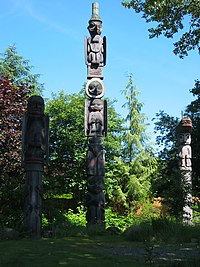










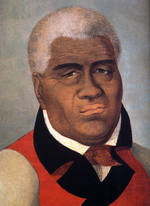





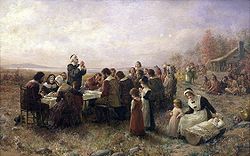


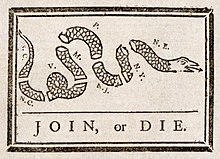
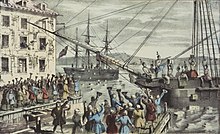

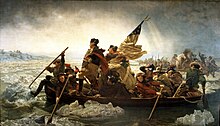

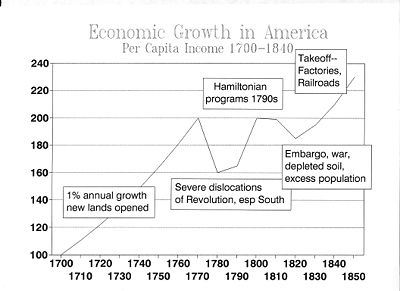


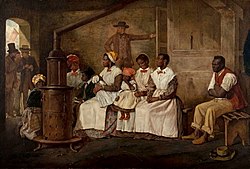

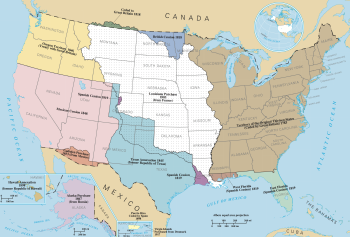
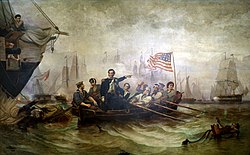









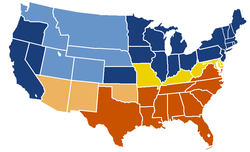

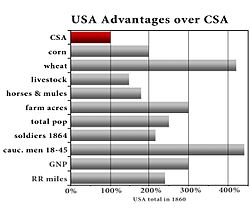
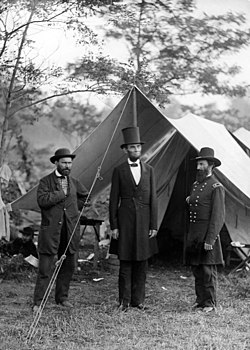



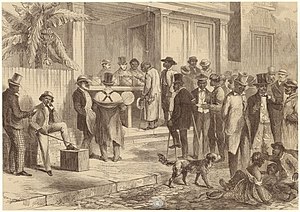


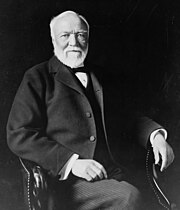


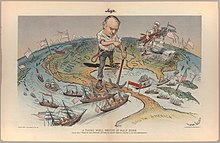


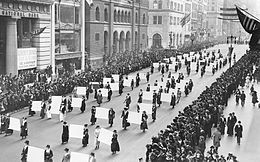
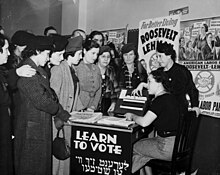

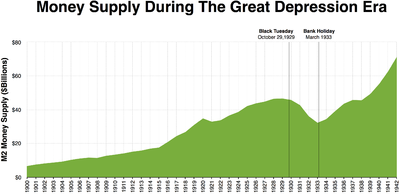


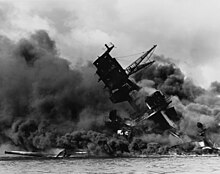

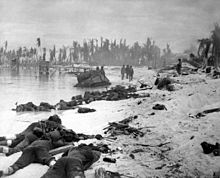









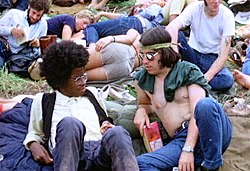

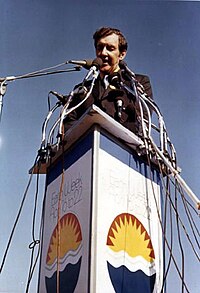



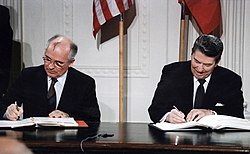

No comments:
Post a Comment